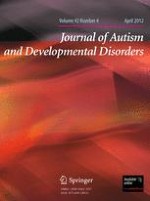01-04-2012 | Original Paper
Measuring Change in Social Interaction Skills of Young Children with Autism
Gepubliceerd in: Journal of Autism and Developmental Disorders | Uitgave 4/2012
Log in om toegang te krijgenAbstract
Designing effective treatments for improving early social behaviors in autism has been identified as a critical research need. One barrier to drawing conclusions about optimal treatments for children with autism is the use of highly varied dependent measures in the treatment literature. Contributing to this is the absence of “gold standard” assessment batteries. This is particularly true for assessing changes in social interaction impairments in very young children with autism. This paper addresses this issue by reviewing variables important in the development and evaluation of assessment measures, discussing previous studies’ choices of socially-related dependent measures, and the strengths, limitations, and research questions pertaining to them. It concludes with recommendations for measurement selection and future directions for research.
